
Apple iPhone SE (2nd Gen)
64 GB, Black, 4.70", SIM + eSIM, 4G
The iPhone SE is one of the phones of the year – no matter what its performance. Capitalism aside, the SE is a phone that punches way above its weight.
An iPhone for 400 Swiss francs? This is a sign Apple is sending the mid-range market packing. The SE ticks all the boxes. If you don’t want to spend too much but want a good, hassle-free phone without any risks, the iPhone SE 2020 or iPhone SE 2nd Generation is a no-brainer. Up until the SE, buying an iPhone used to mean compromising Apple’s hardware, service and quality assurance for open software. Now you can get your hands on an iPhone for 400 Swiss francs. Apple is coming for the mid-range market – which Android surely used to think was safe territory.
After testing and as a lot of things with Apple devices are a given, the only question is: what’s the camera like?
A user said in the digitec comments: «It’s just an iPhone 8 with a new chip.» That might be true, but when you look at it in a disparaging way, you’re missing something. Because, after all, it is an iPhone 8 with a new chip. The iPhone 8 was overshadowed somewhat when it launched at the same time as the iPhone X, but the device was never bad. When you compare the iPhone SE and the iPhone 8, there’s not much to set them apart. The SE has 1 GB more RAM, giving it 3 GB in total, it has the new A13 bionic chip, wireless charging and it has done away with force touch. And that’s where the differences end.

Apple iPhone SE (2nd Gen)
64 GB, Black, 4.70", SIM + eSIM, 4G

The new chip is the differentiating factor when it comes to the SE’s performance. It just goes to show what a small chip can do. What you notice first is the battery life. In the last few years, batteries haven’t evolved much because the rest of the phone hardware has become more efficient, meaning it eats up less energy. An indicator of that is the nanometer number on the system on a chip (SoC) processing. As a rule of thumb, the smaller this number, the more energy-efficient the phone. There are also other factors involved, such as software efficiency and intercompatibility of individual parts. But on the whole, a 7nm-SoC phone is more energy-efficient than a 12nm-SoC phone. That’s why the 1821 mAh battery in the new iPhone SE can easily last a day and a half.
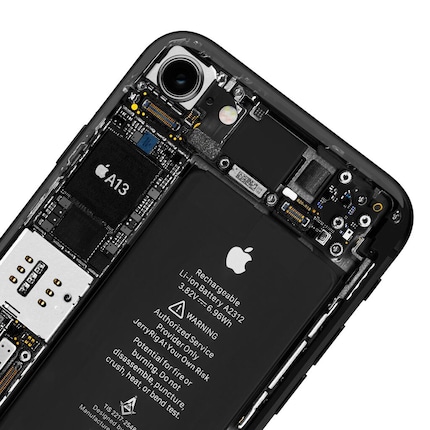
And so you see, a small upgrade can make a big difference.
There are some aspects where the 2nd Generation iPhone SE isn’t up to date. But let’s remember the goal was to create a quality phone at a reasonable price. It stands to reason that Apple had to cut back somewhere. It makes no sense to skimp on the battery, and Apple didn’t want to cut corners with the chip. That’s why the screen and the camera had to take the hit.
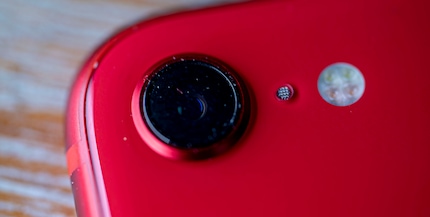
The screen is an IPS display so it won’t have the great black levels of an AMOLED iPhone 11 Pro Max. That being said, the screen is well calibrated, which means you only notice the IPS if you scrutinise the screen technology or if you have better eyesight than me.
And then there’s the camera. Rather than a multiple camera set-up, the iPhone SE only has a single lens on the front and one on the back. This is where the iPhone SE is punching so far above its weight that it’s giving the big flagships a run for their money. In photo terms, at least.


The original files are about the same size and have the same pixel size. The only difference is the iPhone 11 Pro Max takes slightly wider angled shots than the SE. But you don’t need to buy an iPhone 11 Pro Max just for the camera. The SE does a more than satisfactory job.
As for software, the SE runs on a different version to the 11 Pro Max. At the time of writing, the Pro Max runs on iOS 13.6, while the SE runs on 13.5.1. You hardly notice it, except when you’re taking photos. When you zoom on the iPhone 11, you’ve got a wheel but on the SE it’s a really annoying slider that doesn’t make zoom satisfying. What’s more, the images aren’t fantastic when you zoom, but they’re OK.


When you compare the images with zoom and without zoom, you can tell the software doesn’t really cope with zoom. The colours just end up faded and the details are blurry. But social media platforms shouldn’t have a problem with the zoomed photos. That’s why Instagram and the likes have such small scale images.


Another annoying thing about the software is that the screen doesn’t tell you what zoom level you’re on. The iPhone SE 2020 supports up to 5x digital zoom, which isn’t bad but still far from flagship-level specs. It somehow feels petty. It’s like «well, here’s an iPhone SE for 400 Swiss francs but no, we won’t tell you the zoom level because that’ll scare people». Really? Just give us the amazing zoom wheel that the SE’s bigger siblings have. And not just because the wheel gives us all the information we need about the image, but also because its ease of use is incomparable across all smartphones. If all smartphone manufacturers could learn from Apple’s zoom wheel, the smartphone camera world would be a bit better.
While the image might be OK, the sound is bad. Meanwhile, video is only average. The latter is such a trend right now with smartphones and yet Apple is skimping on it completely with the iPhone SE. Compare that to the 11 Pro Max, which is meant to even be able to film to cinema level. That might be the case for the image but not the sound quality. Even Apple is wrestling with a small, shoddy smartphone mic. Too shoddy to deliver impressive audio quality for video. You could catch some of the sound on the software side of things, but the iPhone SE doesn’t do that. The wind rumbles into the microphone, echoes resound and voices descend into background noise.
And yet… camerawoman Mariana Hurtado praises the sound. «I can hear what you’re saying. I didn’t think that would be possible when you were recording somewhere like an underpass.»
It’s a real shame that I can’t even use these recordings on social media. Maybe there will be a software update in future that will make it possible. That or you’ll have to resort to one of the many external microphones that work flawlessly on Apple iPhones.
When it comes to image stabilisation, it’s not anything to write home about either. If you’re walking it’s more or less OK. The bit of optical stabilisation that they get behind a lens does its best, but it’s obvious you’re walking and filming.
And so it’s no surprise the overload test on a motorbike is more or less a waste of time. There’s a load of work for image stabilisation to do and the iPhone SE fails completely.
So… can you use the iPhone SE as a video camera? Only in conjunction with a gimbal and external microphone. To give you a comparison, it’s the same route with the iPhone 11 Pro Max, where stabilisation admittedly isn’t much better than on the SE.
But that’s pretty much the only weakness of the iPhone SE.
It goes without saying that the iPhone SE is on the list of top phones of the year. Even when you take into account its technical performance, the SE is still a significant player in the market. And the reason? With the iPhone SE, Apple isn’t just competing in the premium price segment where people will fork out 1,000 Swiss francs for a mobile. Now that Apple has pulled up a seat at the mid-section of the market, it’s causing a stir and giving an insight into their own company.
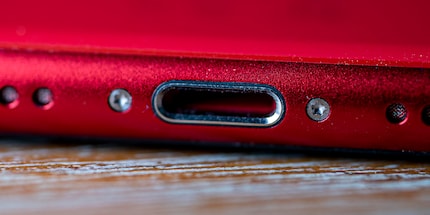
Before I digress massively, I have to make one thing clear: Apple isn’t a charity. Just as with Samsung, Huawei, digitec or Nike, what counts at the end of the day is the bottom line. Apple wants to earn money and if that means the company still makes good phones as a knock-on effect, then so be it. The key element is growth. At the end of the year, the company always has to have sold more, earnt more and produced more. That’s one of the basic principles of capitalism.
Swiss author Friedrich Dürrenmatt compares the growth of states to the growth of stars in his book «Winterkrieg in Tibet». The same applies to companies.
The energy balance of the sun works by only transferring the amount of matter into energy that it needs to shine, and with states it works by not producing more than they spend.
If this balance is disturbed, one of two things can happen. Either the construct collapses or it tries to make something brand new. If Apple reached this point, they’d have to decide internally: collapse or reinvent.
It’s important to note that reaching this point doesn’t necessarily mean «acute crisis» or «imminent crisis». It can also mean Apple was no longer happy with its growth or potential in the premium segment. Here’s a theoretical example with numbers I’ve plucked out of thin air: say Apple sells Apple 1.5 million copies of its iPhone 12 in 2021. And in the previous year it had sold 1 million copies of its iPhone 11. That doesn’t mean there are 2.5 million iPhone users. Because if the 1 million iPhone 11 users were just upgrading, Apple’s growth would be small. It’s at this point that companies have to consider whether their growth is big enough or whether they have to do something new and bold. What follows is an analysis of the market. How much potential is there in the current market? Is it worth investing in the current market or do customers there tend to err on the side of caution? Would investing in new acquisition of customers be disproportionately expensive?
Apple has obviously decided that the premium market in its current form is OK for this year. After all, these kinds of proactive decisions are part of a strategy of ongoing critical questioning and are never meant to last forever. But growth might not be right in certain circumstances, which is why Apple needed to create something new. And voilà, the 2nd Generation iPhone SE.
When Apple does something good for its users by bringing a very good piece of technology to the market at an incredibly low price, it’s just the result of weighing up the options I explained above. If Apple had come to a different decision, we might well be looking at a purple, tiger-striped iPhone 11 Pro Max. And that’s a whole different review, believe me.
The logical question after reflecting about the company’s direction and product options is, what type of new customer is Apple trying to attract? This is where we have to think more internationally and not just about the Swiss context. As a market, Switzerland is only of interest because comparatively we have a lot of money. In reality, people of Zurich are at the top of the global iPhone Index when it comes to the ability to buy an iPhone according to high street bank UBS. The research shows that for a Swiss person to buy an iPhone X, they’d need to work 4.7 days on an average local wage, where a working day is eight hours. Compare that with counterparts in Beijing where you have to work 39.7 days to afford the same phone. Meanwhile, Egyptians in Cairo are at the bottom end of the Index, with 133.3 days needed to pay for the iPhone X. That goes to show that Switzerland isn’t Apple’s target market for the new iPhone SE. To them, we’re small and rich. According to statistics, choosing a smartphone here isn’t a question of being able to afford it; it’s more a question of do you want to buy one. You’re more likely to think «how much do I want to spend on a smartphone?» not «how much can I spend on a smartphone?»
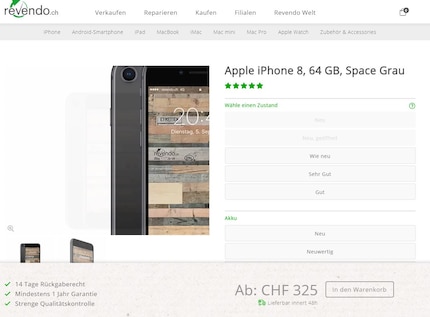
Elsewhere, specifically in the world’s largest markets of China and India, the situation looks slightly different. In Beijing you have to work 317.6 hours for an iPhone X, while in New Delhi it’s as high as 804.2 hours. When it launched, the iPhone X retailed for 999 USD, whereas the iPhone SE comes in at 399 USD for the 64 GB version. Using the same database, here’s what the iPhone SE Index looks like:
In other words, Apple is set to conquer the market with the iPhone SE. The company wants more of the global market. People who used to have to settle for Android phones can now consider Apple. Combine Apple’s reputation in the premium segment with the quality of the SE and you’ve got a phone that should send shivers down spines in the Android community. Apple’s CEO, Steve Cook, added to this provocative strategy when he said this on a call:
I’d expect some fair number of people switching over to iOS. It’s an unbelievable offer. It’s the engine of our top phones, in a very affordable package, and it’s faster than the fastest Android phones. It’s an exceptional value.
A healthy and successful economic strategy involves limiting device production to the smallest output possible. That way the manufacturer saves resources and doesn’t waste any money in production. This can mean that whole markets get left out. Hypothetically, let’s say Apple launched an iPhone made of pure gold and covered in diamonds. It would be unlikely to produce the phone for the Liberia market where the gross national income is less than 1,000 dollars per person. Anyone in Liberia who wanted one would have to import the phone. What I’m getting at is this: Apple will only officially launch an iPhone in a country where they can guarantee sales. Otherwise the company would just end up with products that cost them money and that clog up precious space in their warehouse that could be used for something else.
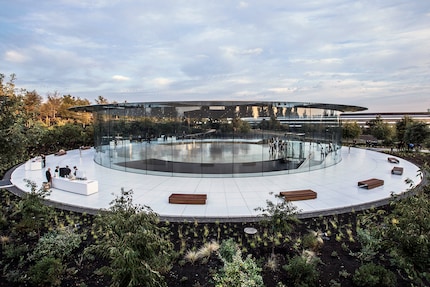
So what can we establish from this? That Apple can guarantee customers in well-to-do Switzerland. But what kind of customers in Switzerland would want the SE? Kids and young people. That’s who.
Everyone knows smartphone users are getting steadily younger. It’s not a surprise when you consider a smartphone isn’t just a status symbol these days. It’s also something incredibly useful that is ingrained in our daily lives. Smartphones are no longer just our phones or devices for sending text messages. They’re also our alarm clock, our TV screen, camera, games console, remote for smart homes, calculator and the list goes on. You can’t deny its varied uses.
But kids should be able to play with things and not worry about breaking them. I’m hardly going to shove a 1,000-franc phone into a youngster’s fist when it’ll last at best six months. But if I can get a brand new iPhone for 400 francs, that’s a different story and it’s something we can discuss as a family. Even if a kid demolished two iPhones a year, that’s the price of an iPhone 11. Of course young people want something cool, but if they have to pay for it themselves, the iPhone SE is a strong candidate.
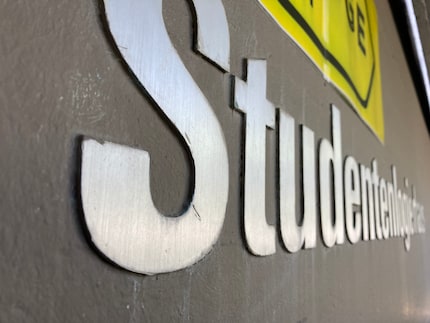
Both kids and young people get something of value with the new SE. In fact, it delivers more than enough performance for adults that aren’t restricted by smartphone price tags.
Young people and kids are customers who were traditionally rooted in the Android world. For obvious reasons. But now in steps Apple with the impressive iPhone SE. Let’s face it, if Apple even managed to win over industry observers, experts and cynics with its 4.7-inch phone, we can only imagine how this will take the younger market by storm.
There’s no doubt about it. The iPhone SE is Apple’s attempt to win over new customer segments. But it goes even further than that. The SE launch is a symbol of Apple attacking the Android stronghold. It’s only recently that Android’s mid-range has seen active development and thought. Before then it was an area resigned to selling old technology from the year before. That’s exactly what Apple is doing right now. Or throwing together phones at low cost using any old cheap parts lying around in Shenzhen and turning them into a sensational launch so it’s no fun for anyone. Apple is a strong and powerful opponent in this segment of what was once an Android-dominated marketplace. It’s not for nothing that Apple is the most valuable brand in the world. And it’s not just built on clever marketing and nice comments from CEO Tim Cook. It comes down to this: without tech performance, no company can come as far as Apple has.
And that’s a wrap. I’d recommend the red iPhone SE. It does come in black and white, but red is way more fun.
Journalist. Author. Hacker. A storyteller searching for boundaries, secrets and taboos – putting the world to paper. Not because I can but because I can’t not.
From the latest iPhone to the return of 80s fashion. The editorial team will help you make sense of it all.
Show all